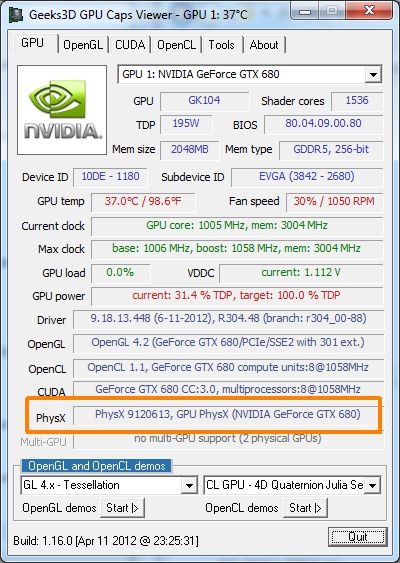

- If i have a amd graphics card do i need nvidia physx for free#
- If i have a amd graphics card do i need nvidia physx drivers#
- If i have a amd graphics card do i need nvidia physx plus#
- If i have a amd graphics card do i need nvidia physx simulator#
- If i have a amd graphics card do i need nvidia physx free#
If i have a amd graphics card do i need nvidia physx free#
On top of that, you need a free expansion slot on your computer’s motherboard–and not just any old slot, but a PCI-Express x16 slot (seen above) for the vast majority of cards, as well as a Power Supply Unit with both enough wattage to spare (GPUs are power hungry) and the proper power connectors for your GPU (if it is beefy enough to require more power than the PCI slot can provide). If all you need is something simple to run two monitors, GPUs based off older designs will run you around $50-100. A midrange GPU can run anywhere from $250-500, and cutting edge models can cost up to $1000 (though they’re rarely worth the price to performance ratio they offer). First and foremost, there’s the matter of cost.

Sounds good, right? Way better performance, ports, ports, and more ports, what could be better? While all those things are awesome, there’s no such thing as a free lunch.
If i have a amd graphics card do i need nvidia physx plus#
While your motherboard may only have a VGA and a DVI port, your dedicated GPU might have those ports plus an HDMI port or even duplicate ports (like two DVI ports, which allows you to easily hook up multiple monitors). In addition to radical performance increase, dedicated GPU cards also typically offer a wider and more modern variety of video ports than your motherboard. This increase in power benefits not only the obvious tasks (like playing video games) but also makes tasks like processing images in Photoshop smoother and faster. Not only does a dedicated graphics card have a sophisticated computer chip designed explicitly for the task of processing video, the GPU, but it also has dedicated RAM for the task (which is typically faster and better optimized for the task than your general system RAM). The biggest benefit of a dedicated GPU is performance.
If i have a amd graphics card do i need nvidia physx simulator#
When you hear someone say “I bought a new video card for my computer” or “I need a new graphics card to play Super Soldier Simulator Shoot Shoot 9000“, they’re talking about a dedicated GPU. Dedicated GPUs, as the name implies, are separate pieces of hardware devoted exclusively to handling graphic processing. On the opposite side of the GPU spectrum, in terms of both price and performance, you’ll find dedicated GPUs. Dedicated GPUs: Premium Pixel Pushing at a Premium Price This means any graphics-heavy task you throw at the integrated system, like rendering video, playing a current generation 3D video game, or the like, will consume a hefty chunk of your system resources and there might not be enough to go around. In addition, an integrated GPU shares all the resources the CPU shares, including your pool of RAM. They’re intended for the demands of a desktop user who reads email, browses the web, drafts documents, not users who do more demanding things like games. Throw a modern game at an integrated GPU and it might stutter through it or, worse, just outright fail to load the game. Of course, integrated graphics have their downsides too. On a modern Windows machine, everything will just be taken care of for you.
If i have a amd graphics card do i need nvidia physx drivers#
And, thanks to their standardization, you’ll rarely run into any issues with drivers or compatibility. Integrated graphics are also very power efficient, since they use very little power beyond what the CPU was already using in the first place. Integrated GPUs are great because they’re free (and hassle-free). You don’t even have to think about them–just combine a consumer class motherboard and CPU (or buy a pre-assembled computer from a retailer like Dell or Best Buy) and, boom, you’ve got somewhere to plug in your monitor. Within the last six years or so, that integrated GPU has been integrated into the CPU instead.

Buy a motherboard, get a simple built-in GPU that can produce an image on your display. For decades now, it’s been common for motherboard manufacturers to include a serviceable (albeit not particularly powerful) GPU built right into the chipset of the motherboard–no extra hardware required. Most motherboards these days come with GPUs integrated into the motherboard or even the CPU itself.
If i have a amd graphics card do i need nvidia physx for free#
Integrated GPUs: Money for Nothing and Our Pixels for Free


 0 kommentar(er)
0 kommentar(er)
